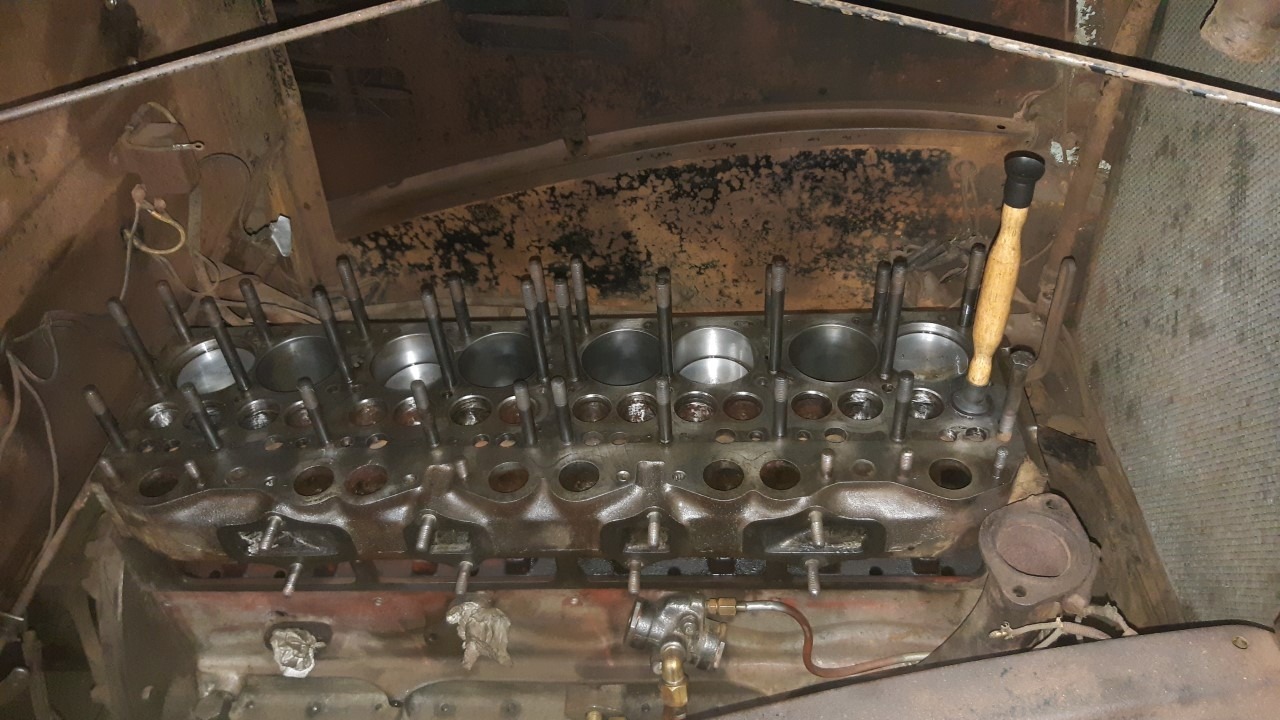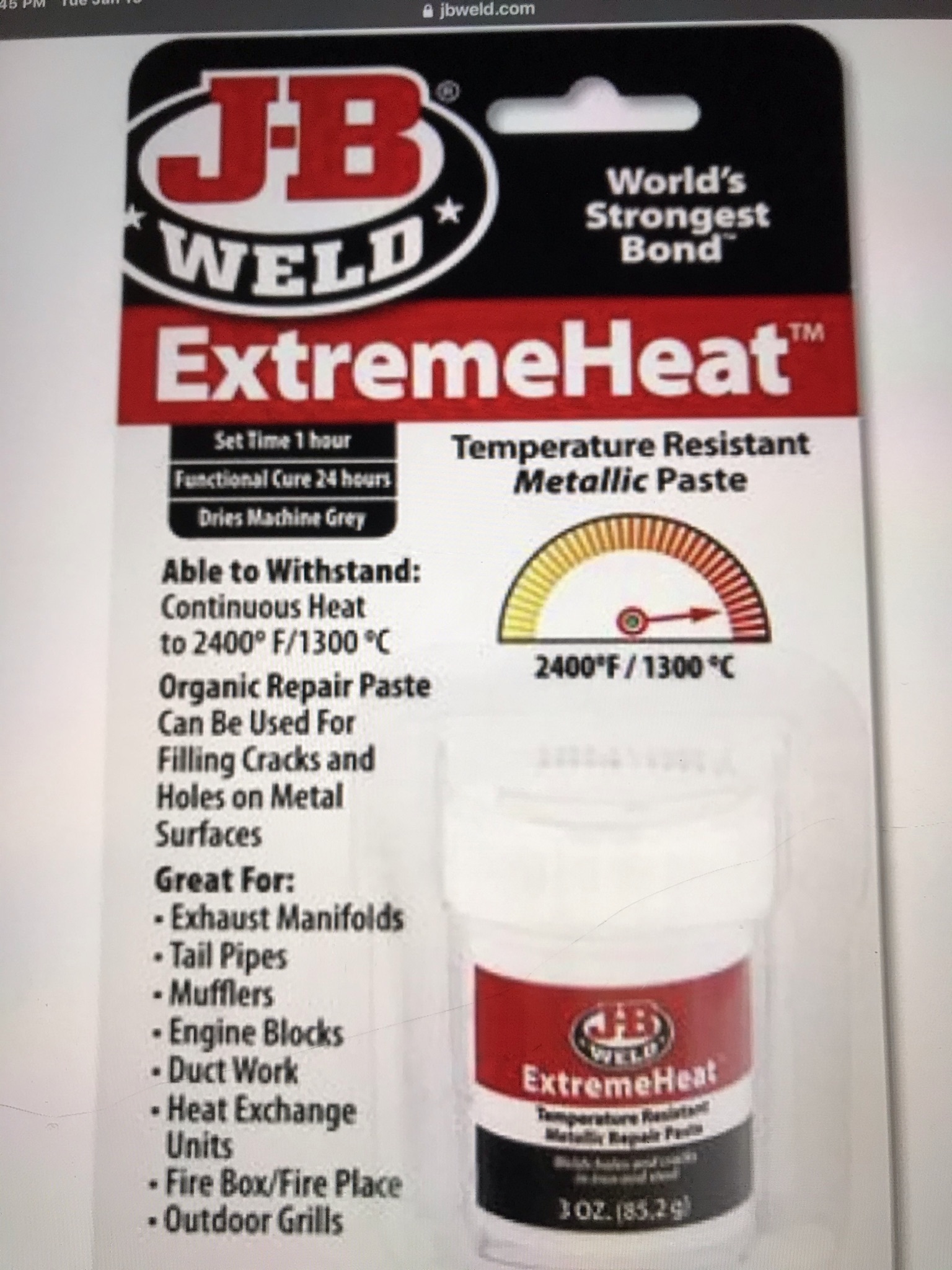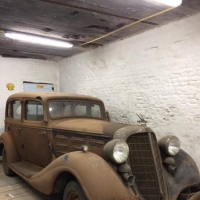Torque Settings Question
What are the torque settings for the nuts when I put the manifold back on, please ?
Is there a correct order for removing and reinstalling the nuts so as to avoid warping the manifold ?
Comments
-
Book says 12-15 for intake studs. Be careful with exhaust nuts, they can be brittle.0
-
Thank you, Geoff.
Is it the same setting for the nuts on the exhaust manifold to block ?0 -
20-30 for exhaust (3/8"), but be careful. I'm wary of using a torque wrench on old exhaust studs, as the only indication you get is when they break!0
-
Thank you very much, Geoff - I'll be careful !0
-
I've got four of them that's broken.Two already breaks;and two at themontage barely touched.;I drilled in the center to extract.ON TOMBE DIRECTEMENT IN THE CHAMBRE. At reassembly put the filet andancheness otherwise.....

0 -
Merde !JACK356 said:I've got four of them that's broken.Two already breaks;and two at themontage barely touched.;I drilled in the center to extract.ON TOMBE DIRECTEMENT IN THE CHAMBRE. At reassembly put the filet andancheness otherwise.....
 0
0 -
Is it possible to just remove the exhaust manifold and leave the inlet manifold bolted in place ?
I've never taken either off before and when I put them on I did both together, loosely assembled and gradually tightening all of the nuts.
At the moment, I have taken all the nuts off the studs but there's no movement when I try to wiggle either manifold.
I only need to change the exhaust manifold gaskets.
I don't want to damage anything - would knocking the manifolds with a rubber mallet be OK to try and separate them ?
I'd really appreciate some expert guidance, please.0 -
So, you have also removed the 4 bolts holding the inlet to the exhaust? Yes, try a little nudge with a rubber hammer. You may need to try a fine chisel between the inlet and exhaust. heat exchange area. Good luck0
-
Thanks a lot Geoff.
So the exhaust will come off separately ? That's a relief to know.
I have taken off all the nuts but will refasten the ones between the inlet manifold flange and the block before proceeding further.
I was thinking of a thin paint scraper rather than a chisel on the join between the two manifolds.
Incidentally, what's "the book" you mentioned that had all the appropriate torque settings for my engine please ?0 -
1952 Hudson Mechanical procedures Manual. It covers 8 cylinder.0
-
Thank you, they're not in the 34-37 Manual.0
-
Some say if its not broke leave it alone. However if you have a lot of studs already broken the remaining studs probably wont last long. You have to decide. The inlet manifold has a long gasket and also a smaller gasket where the exhaust gas flows inside the inlet manifold. Best if both gaskets are the same type and thickness. Geoff is correct. It is possible but you will find its easier to take both manifolds off especially if you have to face the ex manifold. New gaskets should mean no leaks. Good luck0
-
barrysweet52 said:Some say if its not broke leave it alone. However if you have a lot of studs already broken the remaining studs probably wont last long. You have to decide. The inlet manifold has a long gasket and also a smaller gasket where the exhaust gas flows inside the inlet manifold. Best if both gaskets are the same type and thickness. Geoff is correct. It is possible but you will find its easier to take both manifolds off especially if you have to face the ex manifold. New gaskets should mean no leaks. Good luck
No broken studs, thankfully.It seems my problem is around the rearmost stud on the exhaust manifold and its gasket - not the intake manifold as I originally thought. That one visually looks OK.
I've got a greasy, sooty streak below that last stud on the exhaust manifold and oil weeping out of the top of the nut on that stud.
It would be great if I could avoid disturbing the inlet manifold as it might only cause more leakage problems if I do.
At the moment, I've just taken all the nuts of all the studs on both manifolds and have done nothing more than try to wiggle them with hand pressure and nothing has moved - so, hopefully, no damage done in that direction - to either the manifolds or existing gaskets.
I'd like to torque up the inlet manifold nuts and concentrate on getting only the exhaust manifold off.
But I will wait to get the OK to that course of action (or an alternative one you may suggest) from you experts, please, before attempting anything further.
The exhaust manifold was a new casting from the ROC that I put on after I got the engine back from its rebuild and it's going to be an expensive mistake if I damage it !
0 -
I'd do both of them, then you know what you have.0
-
I managed to remove just the exhaust manifold using a thin paint scraper and rubber mallet.
The problem seems to be the rear end gasket but I won't know for sure until I've cleaned everything properly.
I'm out of brake cleaner, so that will have to wait until tomorrow.0 -
I have now cleaned the block and exhaust manifold mating surfaces.
No sign of cracks, just a failure of the rearmost gasket.
Also, coolant was getting past the threads on the rearmost stud so I have wrapped the thread with PFTE tape and reinstalled it.
I'll refill the cooling system and see if that's cured the leak.
I'm wondering whether it's worth doing all the other studs involved with PTFE tape while I'm at it ?0 -
Sorry, but PTFE will not stand the conditions therein of expansion, contraction, heat etc. This stuff is for plumbing, not engineering. Use a proper sealing compound like stud lock or thread seal (CRC products) or even JBweld.0
-
Thanks Geoff.
I've pulled it out again and replaced it with Loctite thread sealer.
PTFE has been OK in the block drain plug for the last 2 or 3 years, but I'd better change that too.
0 -
I have seen this used for petrol fittings too. Very dangerous, as it can dissolve, and cause leaks.0
-

0 -
I haven't tried JB Weld yet but have heard a lot of good things about it.0
-
That stuff works great0
-
-
I used the JB extreme heat above to fix a crack in the exhaust manifold in my 1994 Chevy C2500 at about 180K. Back ground a slight groove in it prior to apply it. Was still holding when I sold it at 252K0
-
Thanks to everyone for the advice.
I've just bought some J-B Weld thread and stud lock.
0
Categories
- 36.9K All Categories
- 104 Hudson 1916 - 1929
- 19 Upcoming Events
- 91 Essex Super 6
- 28.6K HUDSON
- 559 "How To" - Skills, mechanical and other wise
- 993 Street Rods
- 150 American Motors
- 172 The Flathead Forum
- 49 Manuals, etc,.
- 78 Hudson 8
- 44 FORUM - Instructions and Tips on using the forum
- 2.8K CLASSIFIEDS
- 599 Vehicles
- 2.1K Parts & Pieces
- 77 Literature & Memorabilia
- Hudson 1916 - 1929 Yahoo Groups Archived Photos



